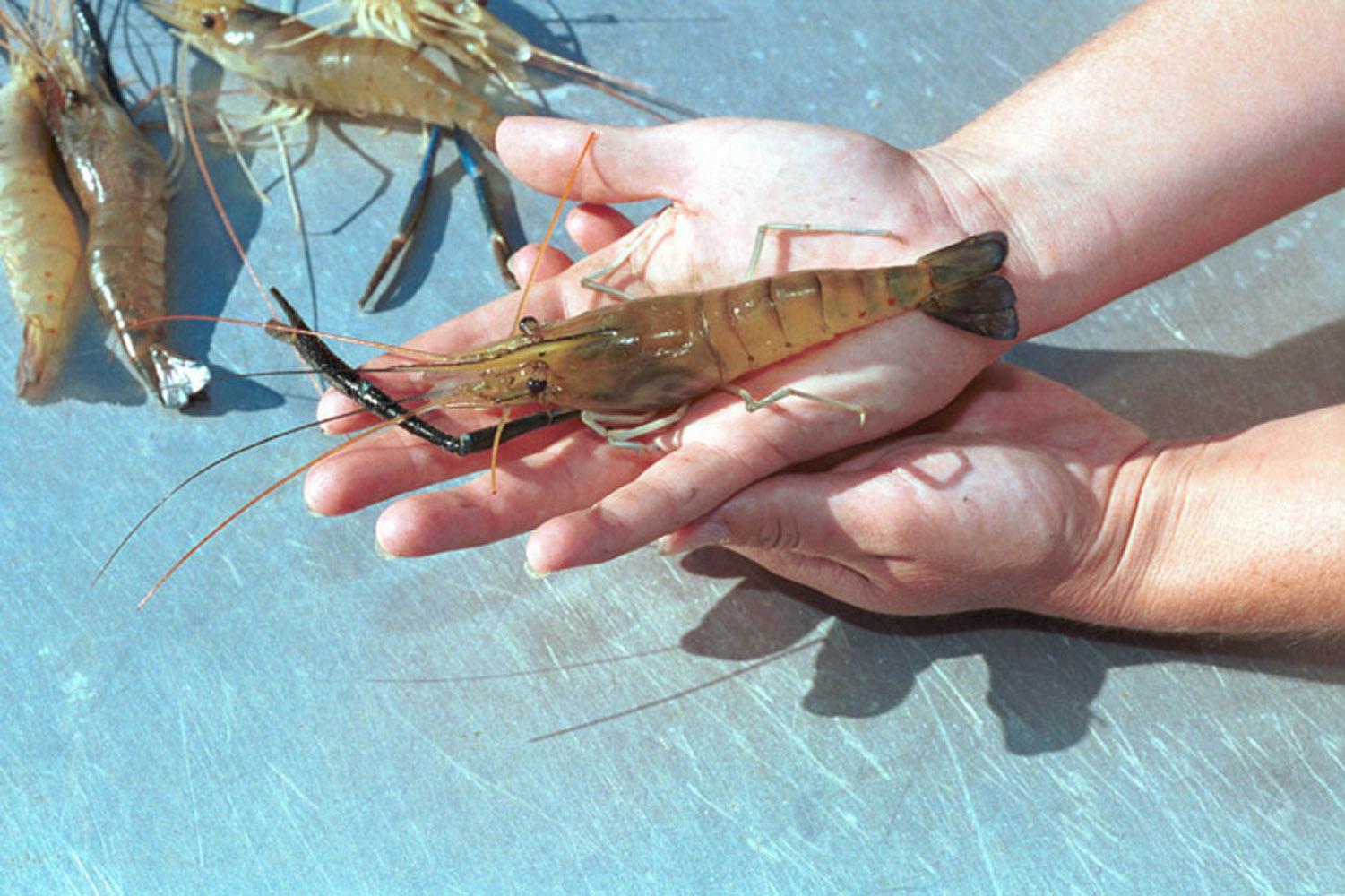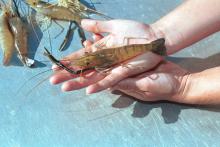Information Possibly Outdated
The information presented on this page was originally released on October 18, 2002. It may not be outdated, but please search our site for more current information. If you plan to quote or reference this information in a publication, please check with the Extension specialist or author before proceeding.
State prawn harvest appears good in 2002
MISSISSIPPI STATE -- Growers of freshwater prawns, one of the state's smaller and newer crops, wrapped up harvest in early October with what appears to be profitable yields.
Mississippi has at least 1,000 water acres in commercial prawn production in the state. There is no state yield estimate, but Lou D'Abramo, professor with the Mississippi Agricultural and Forestry Experiment Station, said several growers reported yields of 800 to 1,000 pounds an acre.
"That's the kind of production we feel is necessary to make the industry economically viable," D'Abramo said. "Most are sold fresh from the ponds or are processed on a small scale, frozen individually or in bulk and sold to consumers or restaurants."
Large-scale, commercial trials began in the mid 1990s in Mississippi, but D'Abramo said interest didn't significantly pick up until 2000. The state's largest farm is located in Wiggins. Most of the other farming is in the Delta, with some acreage found in east Mississippi.
"This crop has tremendous potential to create diversity for catfish farmers," D'Abramo said.
Prawns are best raised in specially designed ponds that can be drained for harvest. Prawns are stocked in mid-May, and grow for 4 to 5 months. They generally cannot survive water temperatures below 55 degrees, so they are harvested by mid-October.
Mississippi State University has two acres of experimental prawn production. This year, researchers evaluated low stocking rates in an effort to grown larger prawns. They stocked 8,500 juveniles per acre, rather than the industry standard of 10,000 to 20,000 per acre.
The lower rate did result in a significantly larger product. Prawns ranged from five to nine prawns per pound (heads on), with the average size being seven per pound. Typical stocking densities have yielded prawns averaging 12 to 15 per pound.
"There seems to be a much better market price per pound for the larger prawns," D'Abramo said. "You can get a respectable yield even though you're growing fewer per acre, and with the increased price per pound, actual revenue is equivalent to or better than that achieved with higher stocking rates."
D'Abramo said the state's prawns can compete successfully with imported freshwater or marine shrimp if they can command a good price based upon unique quality.
"We also can provide a product that the imports can't, such as live or fresh on ice," he said.
Juan Silva, MAFES researcher in MSU's Food Science and Technology Department, is looking at ways to handle, process and store prawns after harvest. He said prawns are more delicate than shrimp, with a firmer texture and milder flavor.
"Texture is important, and you have to freeze them quickly after harvest to maintain it," Silva said. "We're looking at individual quick freezing, both whole and with the heads removed."
Silva said prawns have enzymes in their bodies that soften the meat in storage. When the heads are removed, these enzymes work quicker.
"If we freeze them quickly after harvest, even while they're still alive, they maintain the texture for eight to 12 months when stored and handled correctly," Silva said.




